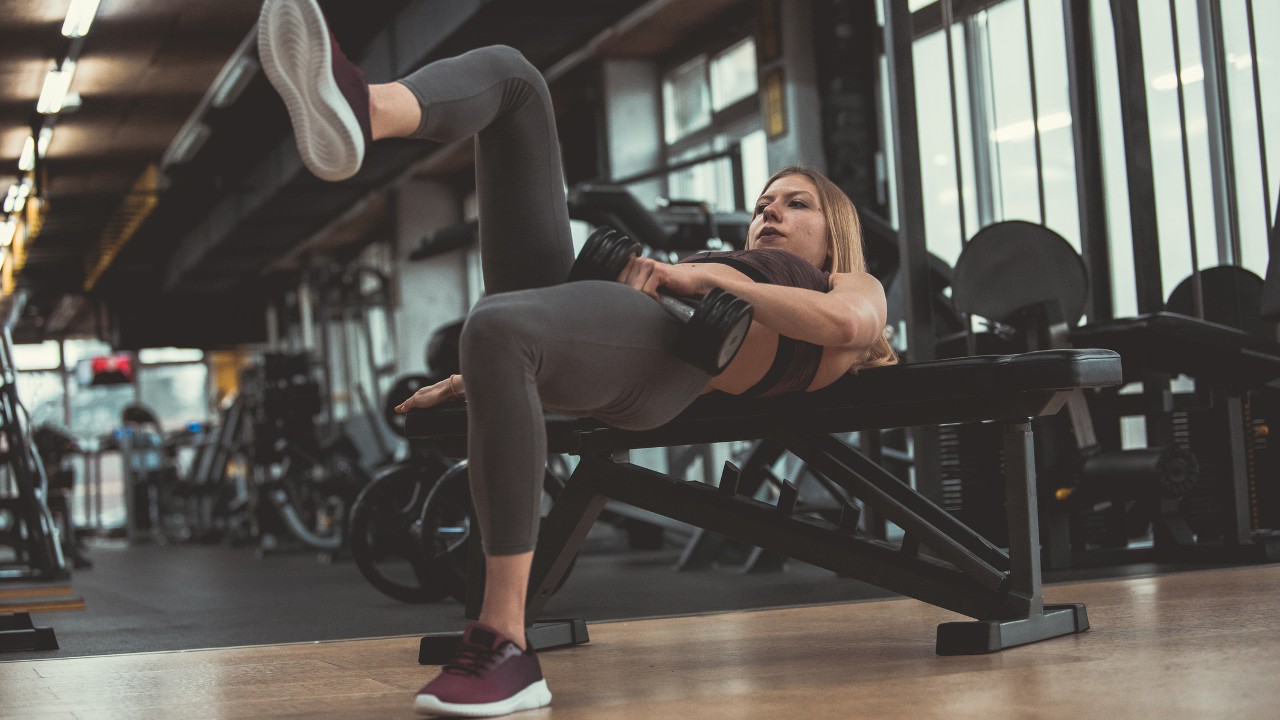Three Physiotherapist-Approved Exercises To Reduce Knee Pain
As well as expert advice on how to manage pain in the front of your knee yourself and when to seek a professional diagnosis

Knee pain is fairly common, but that doesn’t mean it’s something you should ignore. A good way to start dealing with low-level knee pain is by doing exercises that are designed to mobilize the knee and strengthen the muscles around it.
If you’re not sure where to start, try this routine put together by musculoskeletal physiotherapist Alec Hewstone, which is designed to help people who are experiencing pain at the front of the knee or underneath it.
“Pain around the kneecap or underneath the kneecap is generally regarded as a condition called patellofemoral pain syndrome, or for the layman, runner’s knee,” Hewstone tells Coach.
“This kind of pain is usually exacerbated by going downstairs or sitting for extended periods,” he says.
Hewstone shared some straightforward leg exercises which can help reduce this type of knee pain, however, depending on the intensity of your knee pain, you might also need to see a physiotherapist. “If you feel genuinely concerned about your knee pain, particularly if it’s something you’ve had for a little while that may be worsening or at least not getting better, and which is stopping you from doing the things you enjoy, physio could help,” says Hewstone.
Hewstone adds that physio is important for anyone who has experienced trauma to the knee, such as twisting injuries, hyperextension injuries or any kind of blunt force trauma. “If you’re experiencing mechanical symptoms, such as the knee giving way and general instability, as well as any kind of locking or catching of the knee, these symptoms are more of an urgent appeal to see a physio,” he says.
However, for general knee pain that isn’t significantly impacting your life, incorporating some exercises into your routine that strengthen the muscles around the knee is a good way to reduce aches and pains, and improve the way you move.
Get the Coach Newsletter
Sign up for workout ideas, training advice, reviews of the latest gear and more.
Take a look at Hewstone’s Reel below where he demonstrates each of the exercises: the single-leg hip thrust, B-stance Romanian deadlift and front-foot-elevated split squat.
A post shared by Alec Hewstone | Physiotherapist (@alec.hewstone)
A photo posted by on
These are strength exercises and you may need a dumbbell or other weight to complete them effectively, depending on your ability.
Hewstone recommends doing 2-3 sets of 15-20 reps on each side, performed at a slow and controlled tempo. Gradually increase the load—whether that’s weight, reps or sets—over time.
“The exercises in this video are slightly more advanced in terms of rehabilitation, but anyone that goes to the gym or is active should be able to engage with these kinds of exercises,” says Hewstone. You can also try these preventative runner's knee exercises which can all be done with just your bodyweight if you’re finding the above movements difficult.
Hewstone says that it’s normal to experience some discomfort while exercising. “It’s absolutely fine to have discomfort while doing physiotherapy exercises as long as the pain and discomfort you’re experiencing goes back to how it was before you did the exercise within 24 hours,” says Hewstone.
If the pain is unmanageable while doing these exercises, however, stop and speak to a doctor or a physiotherapist.
Need help choosing? Our guide to the best dumbbells can help you decide.

Alice Porter is a journalist who covers health, fitness and wellbeing, among other topics, for titles including Stylist, Fit & Well, Glamour, Cosmopolitan, Grazia, VICE and Refinery29. When she’s not writing about these topics, you can probably find her at her local CrossFit box.
